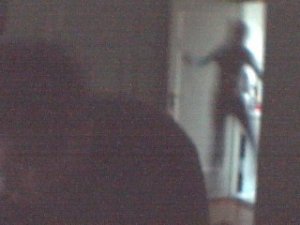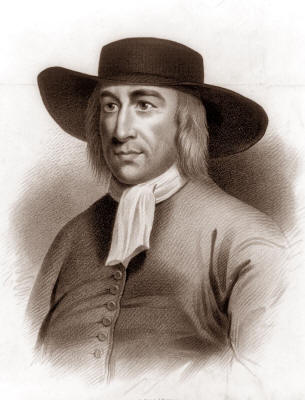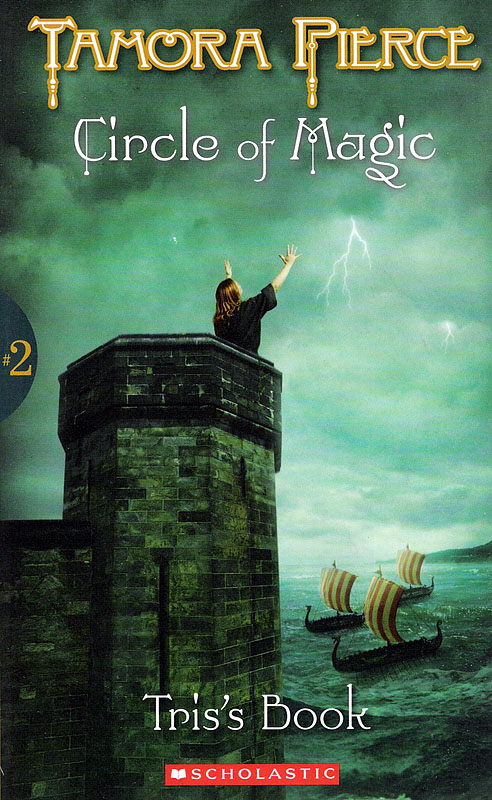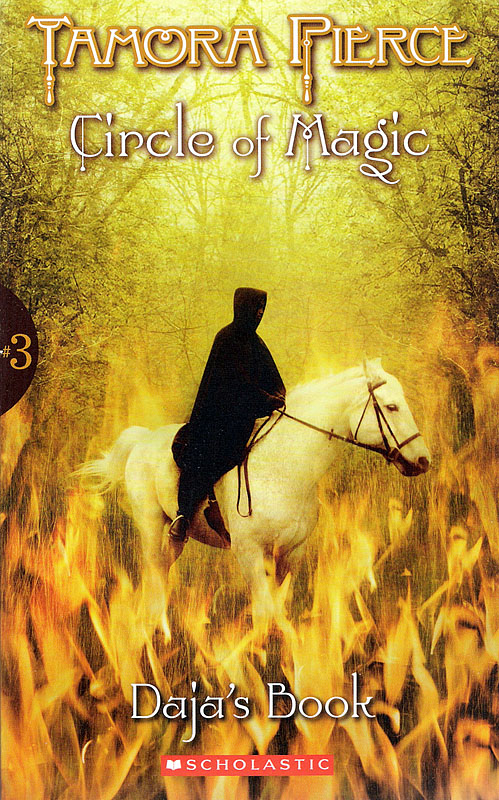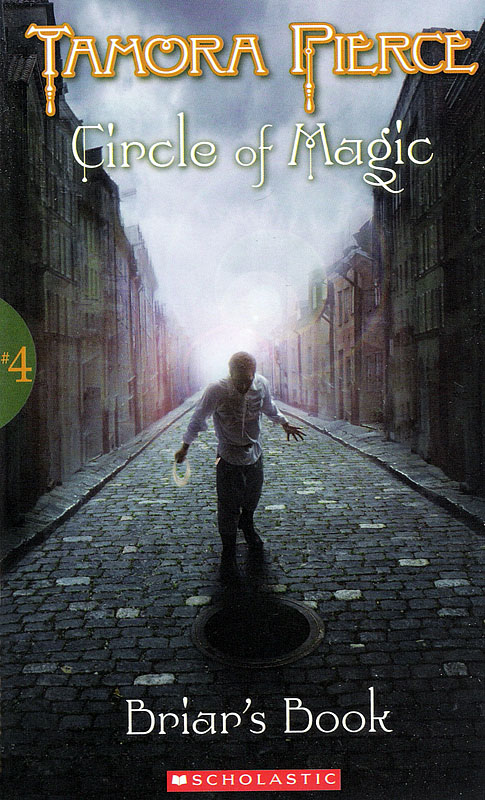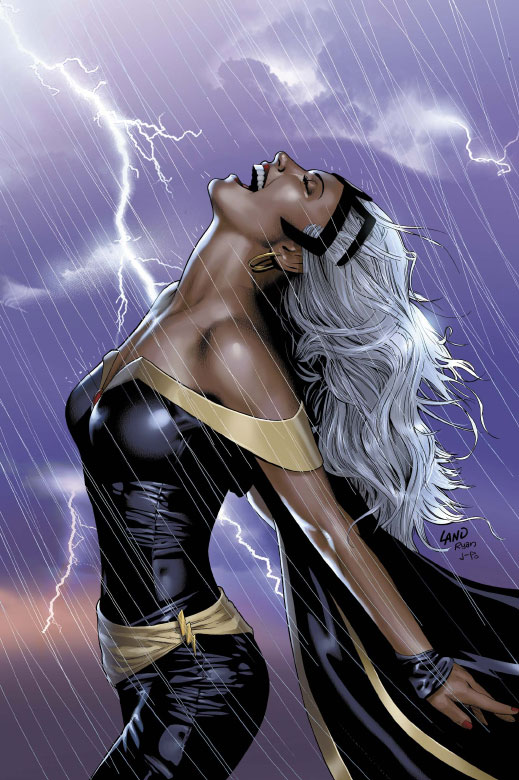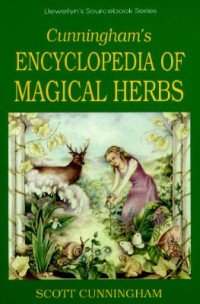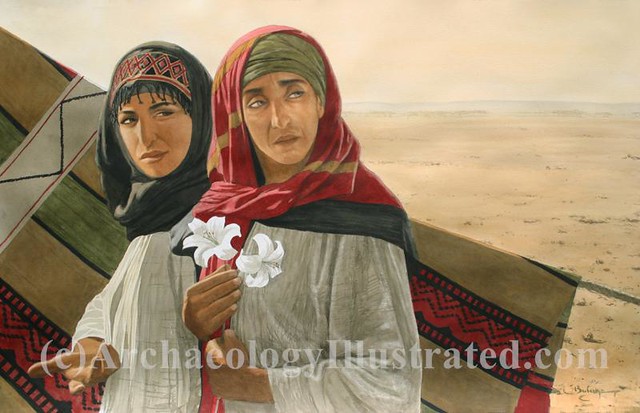This book obviously
needs to be seen more than talked about; one can't summarize each tattoo that's
shown. The authors have collected pictures of tattoos and threw them into
a book; their website is here. I picked this book up in Columbus because I
thought it was a cool concept to divide these tattoos into a
"literary" category. "Literary" can be a quote from a piece
of prose, book, or song; it can also mean an image related to a book. I
submitted an article relating to this book to my university's literature
review, featuring a picture of my own literary tattoo, which I got for my best
friend. Enjoy!
Bibliophiles for Life: Exploring Literary Tattoos
For a long time, the
majority of the American public believed the only people who would get tattooed
were the slum of society. But despite the old-fashioned adversity to the trend,
it is important to remember that tattooing is first and foremost art. Famous
satirist Oscar Wilde said, “Art is the most intense mode of individualism that
the world has ever known,” It’s almost guaranteed you know someone with who has
been “inked,” so you know the amount of dedication it can take. Someone subjects
themselves to being pierced repeatedly with an inked needle into their dermis,
which is beneath their epidermis (Wilson). It is painful, expensive, and
permanent. It has also been viewed by the majority of society as detrimental to
one’s professional appearance. However, there is a drastic change happening for
this art form. Not only are there forty-five million Americans who have
tattoos, but the majority of them are between eighteen and forty years old
(“Tattoo Statistics”). The figures highlight the fact that tattoos are no
longer for the poor degenerates in society who likely could get a disease from
the process. Now the list of Americans who have tattoos do not exclude
people who are in higher education programs or have successful careers; moreover,
with the improved regulations from the CDC and FDA, tattoos are less likely to
cause blood-borne pathogens. I have recently become interested in literary
tattoos, which display the connection between a reader and their love of a
story.
So,what tattoos are
people getting? More often than the stereotypical names of lovers, tattoos of
quotes from books and poems are showing up in the population of young people.
Exploring this topic, Eva Talmadge and Justin Taylor wrote the book The
Word Made Flesh: Literary Tattoos from Bookworms Worldwide. Gone are the
days of seeing ink on only bikers and gang members; this book shows some of the
most popular and influential literary works being forever marked into people’s
skin. The book compiles images from works of Franz Kafka, James Joyce, E.E.
Cummings, and other literary greats. Illustrations from Kurt Vonnegut, ravens
for Poe’s famous poem, and portraits of writers also decorate the skin of fans.
The book's affiliated website, TattooLit.com, also collects submissions from
tattoo enthusiasts around the world who also display their love for the written
word.“[Tattoos] are mainstream now…so it comes as no surprise that people you
might label ‘bookish types’- those librarians among us who know the Dewey
decimal number for poetry by heart…would join the not-so noncomformist wave,
inking a permanent declaration of love for books and writing into their very
skin”(Talmadge & Taylor ix).
Why are they doing
this? The answers vary; it can be anything from a memorial to another person, a
reminder of an idea or moral, or strictly for the aesthetic appeal. William S.,
English major here at WSU, feels the personal nature of his chest tattoo makes
it more appealing. “Some people are perfectly fine with going to a museum or
buying a painting and hanging up on a wall, but I like waking up and seeing a
unique work of art in the reflection, one made specifically for me and that
represents me.” Snell’s tattoo is a quote taken from the Bible, and reflects
his morality. Though Snell is longer a Christian, his tattoo reminds him that
all points of view deserve a voice.
(Fig. 1)
However,many have
balked at the idea of getting a tattoo because of the negative response in some
workplaces. Kendra N. is a client services specialist at County Corps, a
government agency that helps people with foreclosures, and she has two tattoos:
one on her shoulder and one on her wrist. “When I got a tattoo that was visible
with some of my work wardrobe, I was surprised at the number of older coworkers
who complimented me and didn't have any issues with it.” For a government
worker this was surprising to me because they tend to have the strictest
employment regulations.
To further contradict
my assumption, a social worker I interviewed, Josh C.,says, “I see them being
more acceptable in the workplace than even five years ago but in the ultra
professional world (doctors, lawyers, etc.) I still do not see them at all.”
Also keeping the idea of academia in mind, I inquired whether his wife Megan, a
sociology professor at Sinclair Community College, was ever scolded for her own
tattoos. He said that she’s never gotten any negative comments, either from her
students or her coworkers. From these interviews and my own personal
experience, I know some professors (likely more than I know) have tattoos; it’s
simply a matter of keeping them hidden in a professional setting so no one is
offended or doubts the professionalism of the workplace.To hide a tattoo, some
use jewelry (Kendra said she uses a bracelet to hide her wrist), makeup, or
clothing. As Josh says, “I am certain that they exist there but they are
not yet peeking from under a hem line just yet.”
There is no limit to
the kinds of literary symbols inscribed on people’s “natural canvas.” Poems,
novellas, lyrics of songs, and famous quotes are the most typical, but the
languages they may be found in are as varied as the number of literary genres
which exist. There are also excerpts from kids’ books and poetry, like Shel
Silverstein’s Where the Sidewalk Endsand Alice in
Wonderland. Kendra N. got her first tattoo of a fox to immortalize
the famous French novel The Little Prince. She writes, “There is
something deeply innocent and emotive about children's stories. The Little
Prince himself is the embodiment of a child's mind- it loves, it wonders, it
learns. And it does every single aspect wholeheartedly.It so hard to find that
in anything catered to an adult audience.” Being reminded of innocence in the
hectic world of computers and violence that we see on the news everyday can
definitely give one some peace of mind. Indeed, according to Gabe Habash of the Publishers
Weekly website, of the top five books which have inspired tattoos,
three are children’s literature:The Little Prince by Antoine de
Saint-Exupéry, Where the Wild Things Are by Maurice Sendak,
and Alice in Wonderland by Lewis Carroll. I, myself, got a Winnie
the Pooh quote on my arm to remind myself of friendship and the
importance of maintaining it in my life: “’We’ll be Friends Forever, won’t we,
Pooh?’ asked Piglet. ‘Even longer,’ Pooh answered.” Maintaining the light
spirit and unconditional happiness and love which readers can feel in a kid’s
book is an important part of life, and for some getting tattoos of that genre
remind others and myself of that.
Bible quotes, psalms,
and other sacred writings give inspiration to those who look to religion for
guidance, and are reminded of such when they look in the mirror at their
tattooed bodies. William said, “Mine is Proverbs 21:2 ‘All a man’s ways seem
right unto him but the Lord weighs the heart’…. It reminds me that I am flawed
and that there are external factors outside of myself regulating what truth is,
and I don’t get to decide what those things are.” In addition to my Winnie
the Pooh quote, I also have the Hebrew symbol for life, “chai” and
Allah in Arabic on my back because I find Judaism and Islam so inspiring. As
religion is one of the most powerful driving forces for humans on the planet,
finding references to it in tattooing is not surprising.
Furthermore,symbols
and book illustrations from within pages or the covers of books decorate arms,
legs, backs, and feet of those who saw those images over and over as they
repeatedly opened up their favorite story. Alphabets and punctuation marks in
all different fonts and on all different body parts are seen. Graphic novels are
also earning spots on people’s arms, and I don’t just mean the Superman logo.
John, an American Sign Language Major at Sinclair Community College, says his
Egyptian cartouche was inspired by Johnny: The Homicidal Maniac,a
dark comedy by Jhonen Vasquez. John says he loved the illustrations as well as
the story, and thus got his own nickname, Johnny, in Egyptian hieroglyphs to
celebrate his kinship with the novel.
|
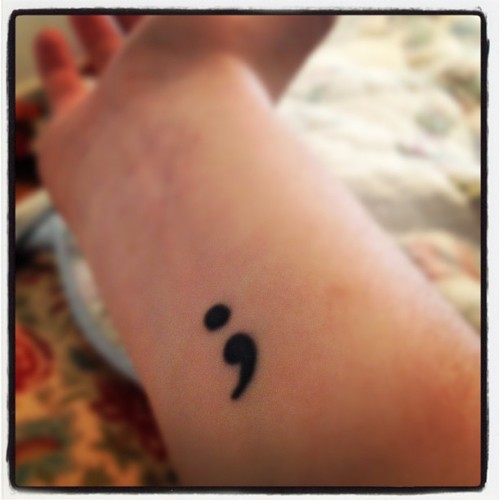 This lover of semicolons writes about her
tattoo, “For Virginia Woolf, who never met one she didn’t like; and for David
Foster Wallace, who used them best.”
This lover of semicolons writes about her
tattoo, “For Virginia Woolf, who never met one she didn’t like; and for David
Foster Wallace, who used them best.”
(Fig.2, TattooLit.com)
|
Finally, there are
those who feel they owe homage to their favorite authors get names, portraits,
or perhaps dates from the lives of the author tattooed. Even more generally,
tattoo fans who just want to exhibit their love of reading may have a book
drawn on them. But for all of these tattoos, it’s important to understand that,
like the inspiration itself, every tattoo “tells a story, and represents
somebody's attempt to forge what Melville called ‘an image of the ungraspable
phantom of life’,” according to Eva Talmadge on The Huffington Post.
So do these literary
tattoos properly honor the written form of art? From the perspective of those
who have been tattooed, it seems so. Those who have committed themselves to the
permanence of the particular quote or image instigated by a book, poem, or
author describe being inspired, encouraged, reminded of some important idea, or
illed with happiness due to their tattoo. “…The tattoos themselves make their
unchangeable declarations of selfhood, meaning, and literary association in a
never-changing world” (Talmadge and Taylor xi). The art form has no longer
become a taboo fad for only the discriminated “extremists” in society; it is
now for the thinkers, believers, and intelligent lovers of self-expression and,
evidently, those who have dedicated themselves to love the written word for
life.
WorksCited
Habash, Gabe.
"The 5 Books That Inspire the Most Tattoos." PWxyz-The News
Blog of Publishers Weekly. PWxyz, 24 Jan.2012. Web. 24 Jan. 2013.
"My
Semicolon." The Word Made Flesh. TheWord Made Flesh, Sept.
2012. Web. 24 Jan. 2013.
N., Kendra.
"Literary Tattoo Interview- TheLittle Prince." E-mail interview. 17
Jan. 2013.
"OscarWilde
Quotes." Oscar Wilde Fan Club. Oscar Wilde Fan Club, 2012.Web.
24 Jan. 2013.
S., William Quayd.
"Literary Tattoo Interview-The Bible." E-mail interview. 16 Jan.
2013.
Talmadge, Eva.
"15 Amazing Literary Tattoos fromDiehard Bookworms (PHOTOS)." The
Huffington Post. TheHuffingtonPost.com, 12 Oct. 2010. Web. 24 Jan. 2013.
Talmadge, Eva, and
Justin Taylor. The Word Made Flesh:Literary Tattoos from Bookworms
Worldwide. New York, NY: HarperPerennial/HarperCollins Pub., 2010. Print.
Wilson, Tracy V.
"How Tattoos Work." DiscoveryHealth. Discovery
Communications, LLC, 2013. Web. 24 Jan. 2013.




